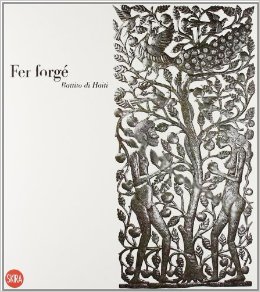Museo delle Culture uses cookies to improve the user experience. If you need more information click on the privacy page. Privacy policy X
28 May 2009 - 28 June 2009, Triennale di Milano
The temporary exhibition "Fer forgé. Battito di Haiti" (Wrought Iron. The Pulse of Haiti.) stems from the collaboration of the Fondazione Francesca Rava - N.P.H Italia Onlus, Nescafé and the Museo delle Culture (MCL) of Lugano. It is the result of multidisciplinary research on some of the prevailing characteristics of the culture and creativity of contemporary Haitian art and is expressed through a game of contrasts and contradictions that places the visitor’s perception on the socio-cultural contexts and conditions of Haiti.The photographs and the metal and polychrome sculptures illustrate the paradoxes, contradictions and the talents of one of the most creative hearts in contemporary African American art. In addition, the exhibition is an integral part of a humanitarian project promoting sustainable economies.
The path through the exhibition is divided into three sections corresponding to different moments of artistic and cultural reflections. The first two halls display a medley of colors and shapes that almost confirms the Western perception of traditional Antillean art, such as the carnival masks from the town of Jacmel and a series of papier-mâché sculptures. The third hall contains five large engraved and painted hammered-metal trees, which disclose the main theme of the path. At the same time, this hall introduces the visitor to the emotional central core of the exhibition, which was designed as a photographic reflection of the context in which the sculptures were made.
The visitor is therefore deliberately placed between two extremes, on a path between presence and absence:
- discovering the (often difficult) existential condition of Haitians
- the urban landscapes in which the architectural structures find their raison d’être, in contrast with the evanescing original colors of Haitian culture 40 black and white photographs by Stefano Guindani are displayed in the fourth and fifth rooms and another 16 color photographs by Roberto Stephenson are displayed in the long corridors that surround the central hall.
The long and unusual shape of the corridors add to the vision of absence, of escape and the inability to perceive the facts of the culture in question.
Finally, the main central hall displays 42 hammered, carved and sculpted artworks, made out of recycled cans and barrels from the suburban neighborhood Croix-des-Bouquets, situated to the north of Port-au-Prince. These form the core of the exhibition and show a surprising art form that generated a spontaneous school of artistic thought. They depict characters of an ideological and social imagination in simple but highly expressive forms that tend to satirize their true complexity. Despite their two-dimensionality, the sculptures are employed in a game of shadows that reflect the depth of the cultural inspiration from which they were primarily created.
The exhibition catalogue has been curated by Francesco Paolo Campione, the director of the Museo delle Culture. The exhibition has been sponsored by the city of Milan, EXPO 2012 and the Consulate of the Republic of Haiti in Milan.
